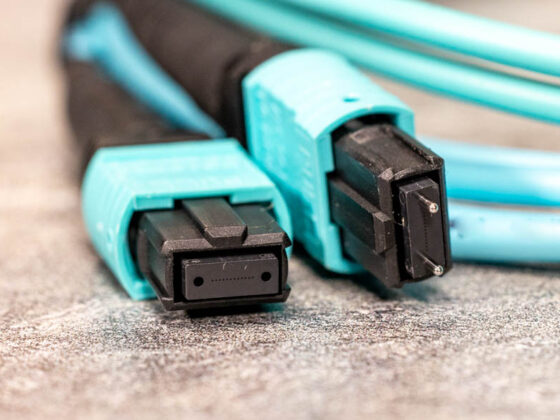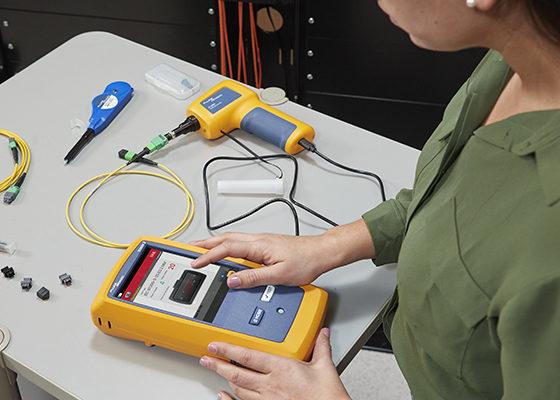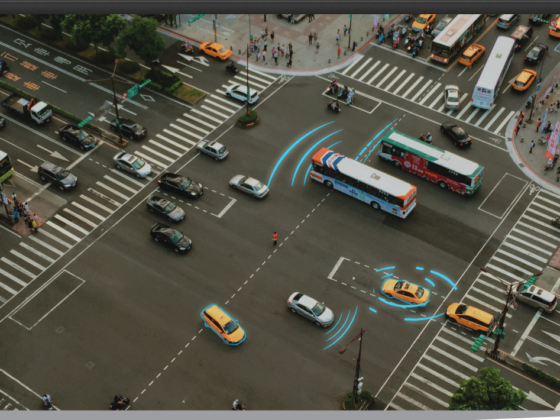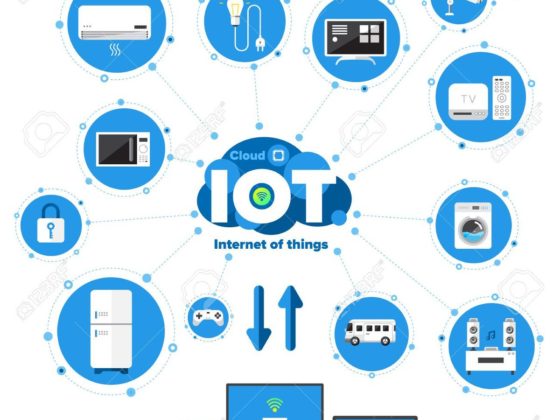Passive Optical LANs (POLs)
Passive Optical LAN is an adaptation of the Gigabit-capable Passive Optical Networks (GPON) used in Fiber-to-the-Home deployments for the LAN environment. POL offers several advantages to enterprise LANs: simplicity in design; less equipment and cabling; centralized management; lower energy requirements; ease of testing; and future proofing.Passive Optical LAN, or OLAN, is a fiber-based IT infrastructure that combines the best of standards-based Gigabit Passive Optical Network (G-PON) and advanced enterprise Ethernet technologies. The five (5) main pieces of an Optical LAN system are the Optical Line Terminal (OLT), Single Mode Fiber (SMF) cabling, Passive Optical Splitters, Optical Network Terminal (ONT) and Passive Optical Network Manager.
The two main advantages of the POL architecture is first, that it shifts the network intelligence to a central location, the OLT, and centralizes the management of all ONTs. This reduces the complexity of managing the network, reduces maintenance complexity, and allows IT managers to fully control network services. Second, because GPON technology uses single-mode fiber, rather than the multimode fiber more commonly deployed in enterprise applications, it can support a span of up to 20 kilometers (km). This means networks can cover much larger span lengths without installing additional power on each floor – instead, the network uses passive splitters.
POL FAQs
How do you calculate upstream & downstream bandwith per user on an ONT?
the ONT itself is going to be very high performance connected to fiber, so it itself is high performance, and often times can have multiple ports connecting to different devices. But, what is your general recommendations on planning for bandwidth in terms of the number of ONTs you’re going to need?
Most ONTs offer either four ports or eight ports, depending on how many devices you’re going to hook up. So if you’re going to hook up to a lot of wireless access points that consume a lot of bandwidth, that would be a consideration. One of the things you can do from the ONTs is dynamic bandwidth allocation. This allows you to go into each ONT and each port and allocate a certain amount of bandwidth guaranteed per port, and then you can also have the ability to burst, too. So it really depends on the different bandwidth requirements of the devices that are going to plug into the ONT.
Does an ONT need to be in an enclosure?
In a POL, the Optical Network Terminal (ONT) is can be wall mounted or ceiling mounted. The do not need to be an enclosure unless they are in a place where they might be accessed by the public — say, in a hotel or an MDU. In that case, they would likely be put in an in-wall enclosure.
Are there any special requirements for the optical fiber used in passive optical LAN?
Each ONT end device just requires one strand of single mode fiber. And the connectors typically used in passive optical LAN are SC/APC angle polish connectors. Note: some manufacturers now offer a way to leverage multimode fiber in applications where the fiber plant was already installed.
Are there any special requirements for the optical fiber used in passive optical LANs?
In a Passive Optical LAN each ONT end device requires one strand of single-mode fiber. The connectors typically used in passive optical LAN are SC/APC angle polish connectors on the end. If you have existing single mode in your backbone, then you’re halfway there.
Is there a difference between a PON power meter and a ‘regular’ power meter?
Yes, there are several differences. First, the PON power meter is a pass through device which measures the power of the downstream signal and the power of the upstream signal. A regular power meter is a single ended detector, so you can measure the downstream power, but then you can not validate that your ONT’s properly emitting because you cannot measure the upstream. That’s the first difference. Also, on your PON power meter you have preconfigured thresholds for the different wavelengths according to the different PON layers that you could have GPON, XGS PON, and GP PON2, all of those.
What’s the difference between PON, G-PON, and NG-PON?
PON is the general concept of Passive Optical Networking, which refers to the use of splitter typologies in point to multipoint technologies where one fiber is split out to multiple endpoints. GPON is the 2.5 Gbps Passive Optical Network, while NG-PON is in general, everything which is Next Generation, meaning 10 Gbps and beyond. In the standards they talk about Next Gen PON1, which is then the 10 Gbps variants, and Next Gen PON2, which are then the TWDM PON,
What is the number one cause of network failure?
The leading cause of network failures is dirty connections. Almost all the time, the dirt is completely invisible to the naked eye, but since the diameter of a fiber core is so small (50 microns for multimode fiber and only 8 microns for singlemode fiber) it doesn’t take much to block the light on the fiber endface.
When the dust cap is removed the ferrule end face can easily be contaminated by direct contact with skin oil, grease, salt, fingerprints, lint, uncured epoxy, grime or dust. Even just open air exposure may result in moisture and dust sticking to the end-face. When the dust caps are off your connectors are at risk of contamination.
This is why proper inspection and cleaning techniques are so important, especially with today’s tight loss budgets where too much loss from a dirty connection can have a direct impact on bit error rate, insertion loss and optical return loss which will impact system performance and reliability.
How do you test a POL network?
Since the POL is an enterprise adaptation of the GPON used in Fiber-to-the-Home applications, you can use the same tools and expertise that were developed for GPON.The recommended testing protocols for a passive optical LAN deployment are:
- Inspecting the connector
- Fiber characterization, with different tools like OLTS, OTDR, iOLM
- Validating service activation using a PON power meter
- Reporting tests and test results
In fiber optic networks, 80% of the problems are caused by dirty or damaged optical connectors, 10% of network problems are due to macrobends, which are responsible for signal loss and network quality deterioration, and the remaining 10% of problems can be attributed to other components – the ONT, the OLT and the splitters.
Does a Passive Optical LAN (POL) use multimode or single-mode fiber?
Passive optical LAN (POL) architectures primarily use single-mode fiber because of the medium’s high capacity and ability to support long link lengths — up to 20 km. In a POL architecture. In a POL, a passive single-mode fiber network runs down to the desktop, through an optical splitter and into a thin-client edge device or Optical Network Terminal (ONT). Recently single-mode to multimode optical splitters have been introduced that enable cost-effective re-use of existing multimode fiber cabling for Passive Optical LANs inside buildings and across a campus.
RECENT WEBINARS
-

LAN Standards, News & Trends: 2025 Update
Join FOTC's Standards Chair, Cindy Montstream, for an update on important LAN Standards. Cindy will cover TIA standards, IEEE standards…Read more -

The Perpetual Perplexities of Optical Fiber Polarity
Optical Fiber Polarity is an essential design and implementation process necessary to ensure the proper functioning of all optical networks.…Read more -

Tales from the Field: The Top 5 Mistakes and How to Avoid Them
This presentation addresses some of the most common mistakes we see in the field and how to avoid them. Topics…Read more -

TIA-942-C Data Center Standard: What’s New?
The recent revision to ANSI/TIA-942-C addresses the evolving needs and challenges of modern data center infrastructure by incorporating new technologies…Read more
RECENT ARTICLES
-

Artificial Intelligence Needs Glass
With large language models that power systems like ChatGPT increasing in popularity – the AI text-generating website saw 1.6 billion…Read more -

Connecting the future—from cloud to edge
All around us, technology is rapidly evolving, and its capabilities are continuing to become a part of everyday life. Advanced…Read more -

5 things you need to know about multifiber push-on connector testing
With increased service demand is driven by an uptick in teleworking, distance learning, and online socializing trends, reliable network connectivity…Read more -

TIA Standard adds MPO Test Requirements and Procedures
In its latest revision (September 2022), the Telecom Industry Association (TIA) added MPO test requirements and procedures to their optical…Read more
RECENT WHITE PAPERS
-

Types and Locations of Edge Data Centers: Scoping Locations That Work for Your Needs
To meet the needs of new applications, data needs to be hosted very close to users and network functionality needs…Read more -

Fiber Contamination, Inspection & Cleaning
Despite industry best practice of inspecting and cleaning fiber optic endfaces, contaminated connections remain the number one cause of fiber…Read more -

Why Edge? Why Now? How the Rise of Edge Computing will Reshape the Data Center Landscape
Over the next decade, edge computing will reshape the data center landscape due to the rapid growth in the number…Read more -

The Promise of Narrowband IoT
Current IoT communication solutions on cellular systems require too much power and cost for many of IoT’s applications. Narrowband IoT…Read more
MPO
SYSTEMS
TECHNOLOGY FOR
MPO Systems
Polarity
MPO connectors
Testing
